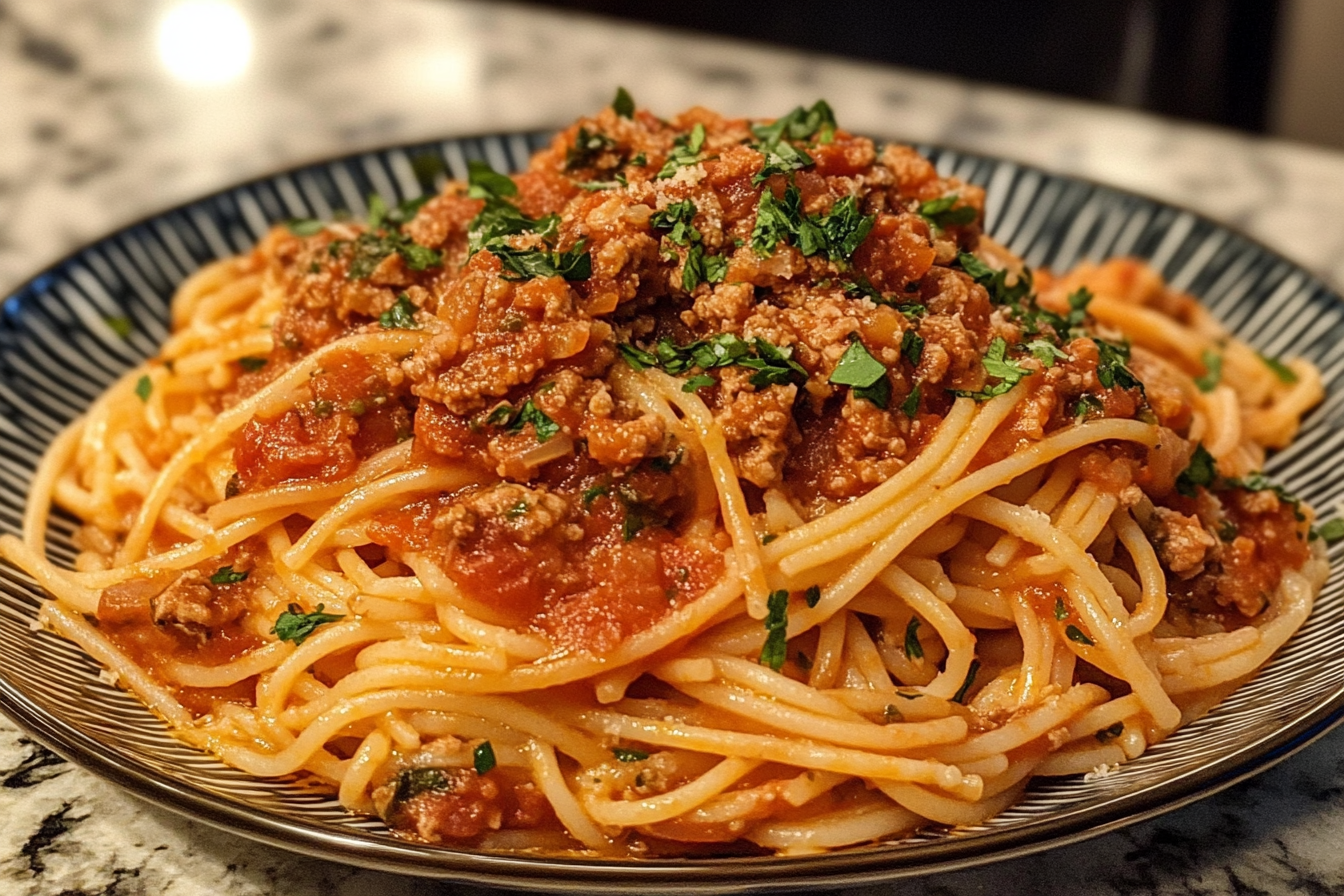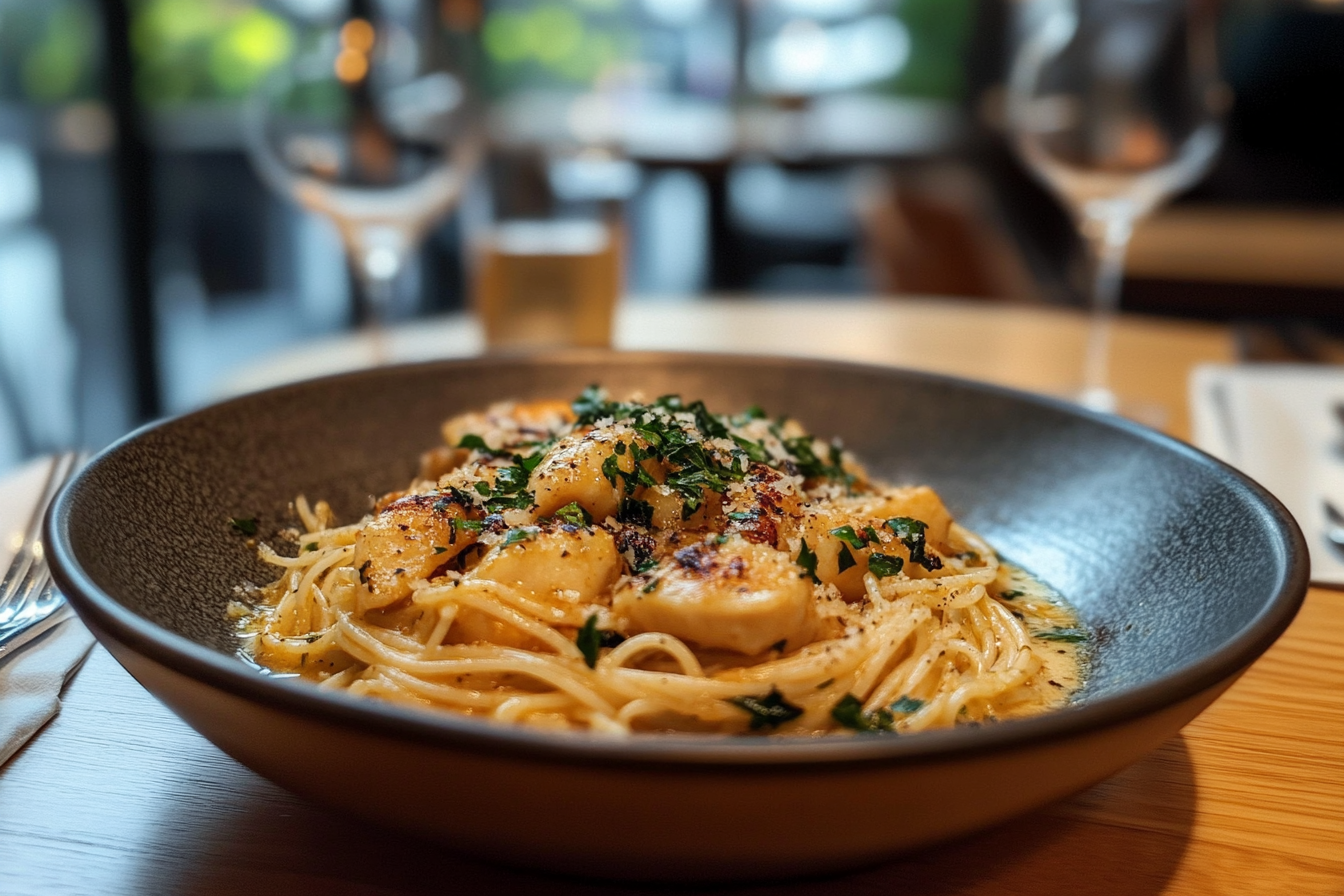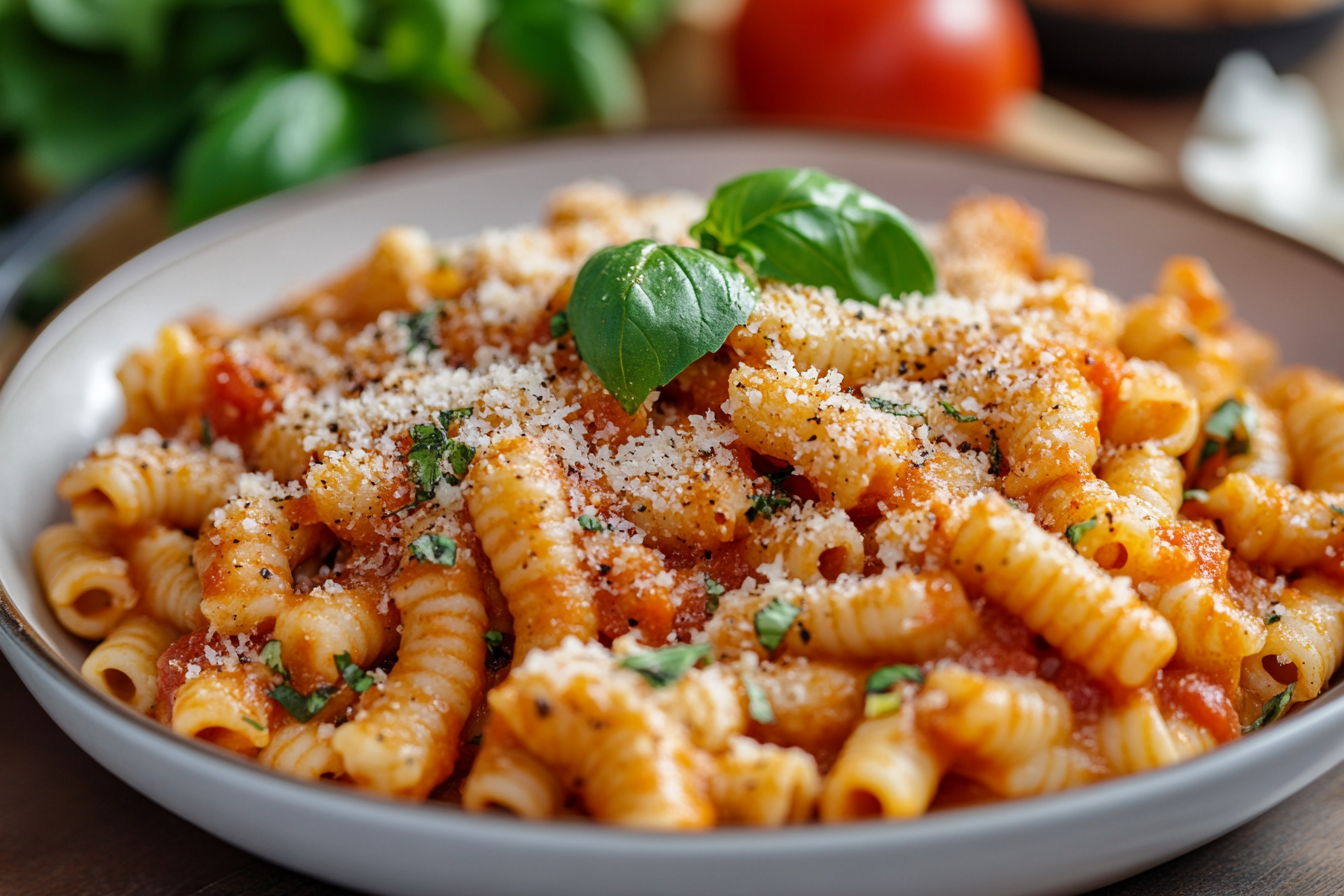Italian cuisine is known for its diversity, rich flavors, and profound cultural significance, with pasta being one of its most recognizable components. Among the many types of pasta, Capellini holds a special place, characterized by its fine, delicate strands that give it its name. In Italian, Capellini translates to “little hairs,” reflecting its ultra-thin texture. This pasta is slightly thicker than angel hair but remains one of the finest forms available, making it ideal for light, delicate sauces.
Etymology of Capellini
The word Capellini is derived from the Italian word “capello,” meaning “hair.” The suffix “-ini” is a diminutive in Italian, indicating smallness, so the word Capellini essentially means “little hairs.” This aptly describes the pasta’s physical characteristics. Artisans designed Capellini to be delicate and light, just as its name suggests, which gives it a distinct place among Italian pasta types.
The name Capellini likely originated during the Renaissance period, when Italians began to evolve their cuisine and more precisely defined and categorized different pasta types. Over time, Capellini became known not only for its thinness but also for its quick cooking time and its compatibility with a variety of sauces.
The Cultural Significance of Pasta in Italy
Pasta, including Capellini, is not just a dish in Italy it’s a cultural symbol. The Italians view pasta as an essential component of daily life, and many regions boast their own specific shapes, sizes, and preparations. Italians often choose pasta based on regional traditions, the season, and the type of meal they are preparing.
People often associate Capellini with the warmer months due to its lightness, when they prefer meals to be fresh and light. Cooks frequently use it in summer dishes, pairing it with fresh tomatoes, basil, and olive oil. This simple yet flavorful combination is a reflection of Italian culinary philosophy: fresh ingredients, simple preparations, and a respect for the natural flavors of the food.
Historical Background of Capellini
The history of Capellini is intertwined with the broader history of pasta in Italy. Pasta itself has ancient roots, potentially dating back to the Roman Empire or even earlier civilizations like the Etruscans. Over time, pasta-making techniques evolved, and by the Renaissance, Italy had become a hub for pasta production.
People in Northern Italy, in particular, developed many thin pasta varieties, including Capellini. During the Middle Ages and the Renaissance, artisans primarily made pasta by hand, using their skill to roll and cut the dough into the fine strands that characterize Capellini. This labor-intensive work produced a pasta that cooks quickly and pairs well with light sauces, making it a favorite in households across Italy.
By the 19th century, the industrial revolution brought changes to pasta-making, and Capellini became more widely available thanks to advancements in pasta production. The introduction of pasta machines allowed for more consistent production of thin pasta strands like Capellini, bringing it to a wider audience both in Italy and internationally.
Capellini in Modern Italy
Today, Capellini remains a beloved pasta type in Italy, often used in family meals, especially during the spring and summer months. It’s commonly served with light, oil-based sauces, but it’s also found in soups, broths, and seafood dishes. Despite the advent of modern cooking techniques and the global spread of Italian cuisine, Capellini continues to hold its own as a staple in the Italian kitchen.
Capellini vs. Other Italian Pasta Types
Italians have created many types of pasta, each with its unique characteristics. People often compare Capellini to other thin pastas such as angel hair, spaghetti, and vermicelli. Here’s how Capellini stands apart from these other varieties:
- Angel Hair (Capelli d’angelo): Capellini and angel hair are often confused because they are both thin, delicate pastas. However, angel hair is slightly finer than Capellini. Cooks use both types in similar dishes, but Capellini holds its structure better because of its slight thickness.
- Spaghetti: While both Capellini and spaghetti are long pastas, spaghetti is much thicker. Cooks often pair spaghetti with heavier sauces like Bolognese, while they reserve Capellini for light, oil-based or broth-based sauces.
- Vermicelli: In Italy, vermicelli is thicker than Capellini, but in other parts of the world, particularly in Asia, vermicelli can refer to very thin noodles that resemble Capellini. The difference is primarily in regional naming conventions, but in Italy, vermicelli typically refers to a slightly thicker pasta.
You can explore the differences between these pasta types in more detail by visiting Capellini vs Vermicelli.
Traditional Capellini Dishes
Capellini is a versatile pasta that works well with a variety of ingredients. Here are a few traditional dishes where Capellini shines:
- Capellini al Pomodoro: This is one of the most iconic dishes featuring Capellini. It’s a simple combination of fresh tomatoes, garlic, basil, and olive oil, showcasing the Italian philosophy of using fresh, high-quality ingredients.
- Capellini with Shrimp and Lemon: A light, seafood-based dish that’s perfect for summer. The shrimp adds a subtle sweetness, while the lemon zest and olive oil provide a bright, fresh flavor that complements the delicate texture of the Capellini.
- In Capellini in Brodo (Capellini in Broth): cooks serve Capellini in a light broth, often made with vegetables or chicken. The thin pasta absorbs the flavors of the broth while maintaining its delicate structure.
For more traditional and modern Capellini dishes, visit Best Capellini Recipes.
How to Cook Capellini Perfectly
Due to its fine texture, cooking Capellini requires careful attention to avoid overcooking. Here’s a detailed guide on how to cook it perfectly:
- Bring a large pot of water to a boil: The key to good pasta is cooking it in plenty of water. For every 100 grams of pasta, use at least 1 liter of water. This ensures the pasta has enough space to cook evenly.
- Salt the water generously: Pasta absorbs salt during cooking, so adding enough salt to the water is essential. A good rule of thumb is to add 1 tablespoon of salt for every 4 liters of water.
- Cook for 2-3 minutes: Because Capellini is so thin, it cooks very quickly. Keep an eye on it to ensure it doesn’t overcook. You want the pasta to be al dente, meaning it should be firm to the bite.
- Drain the pasta: immediately once it’s done to stop the cooking process. You can reserve some of the pasta water to add to your sauce, as the starchy water helps the sauce cling to the pasta.
- Toss with sauce: Light sauces work best with Capellini. Consider using olive oil, garlic, fresh tomatoes, or seafood. Toss the pasta with the sauce while it’s still hot to ensure the flavors meld together.
Nutritional Value of Capellini
Capellini is a relatively light pasta, making it a good choice for those looking for a lower-calorie option. Here’s a breakdown of the nutritional content in 100 grams of cooked Capellini:
- Calories: 160-180
- Carbohydrates: 30-35 grams
- Protein: 6-7 grams
- Fiber: 2 grams
- Fat: Less than 1 gram (without sauce)
While Capellini provides a good source of carbohydrates, pairing it with vegetables, lean proteins, and healthy fats can make it a well-rounded meal. For instance, serving Capellini with olive oil, garlic, and fresh vegetables can create a delicious, nutritious dish.
Regional Variations of Capellini
In Italy, specific regions often tie their pasta dishes to local traditions, and each region offers its own variations on how to prepare and serve Capellini. Here are a few examples of regional variations:
- Liguria: this northern coastal region, people often serve Capellini with pesto, a fresh sauce made from basil, pine nuts, garlic, and Parmesan cheese. The lightness of the Capellini pairs well with the herbal, slightly creamy pesto sauce.
- Tuscany: Known for its simple, rustic cuisine, Tuscany often serves Capellini in brothy soups or with fresh, local vegetables. A dish like Capellini in brodo with Tuscan kale or white beans perfectly highlights the region’s fresh ingredients.
- Sicily: In the southern region of Sicily, seafood is a common ingredient in pasta dishes. Cooks might serve Capellini with sardines, anchovies, or shrimp, combining the flavors of the sea with local olive oil and citrus. Sicilian Capellini dishes often feature bold flavors, such as capers, olives, and tomatoes.
These regional variations showcase the adaptability of Capellini and its ability to complement a wide variety of ingredients and flavors.
Capellini in Modern Global Cuisine
In today’s global culinary scene, chefs no longer confine Capellini to traditional Italian dishes. It has found its way into modern and fusion cooking, particularly in the United States and Asia. Here are some ways Capellini is being used in modern cuisine:
- Fusion Dishes: In many parts of the world, chefs are incorporating Capellini into fusion dishes that blend Italian pasta with Asian ingredients. For example, Capellini is sometimes used in stir-fries as a substitute for rice noodles. Its thin texture and quick cooking time make it a convenient option for these dishes.
- Health-Conscious Cooking: As more people turn to lighter, healthier meals, Capellini has become a popular choice for low-calorie, high-nutrient dishes. Cooks often pair Capellini with vegetables like zucchini, kale, or avocado in recipes that focus on clean eating. In some dishes, they combine Capellini with spiralized vegetable noodles, creating a lighter, gluten-free meal that suits health-conscious diets. In places like Italy and the Mediterranean, these combinations reflect the region’s focus on fresh, seasonal ingredients, offering a balance between tradition and modern dietary preferences.
- Cooks: also use Capellini in cold pasta salads, where it pairs well with fresh vegetables, olive oil, and vinaigrettes. Its lightness makes it ideal for cold dishes, especially in the summer months.
These modern interpretations of Capellini showcase its versatility and its ability to adapt to new culinary trends while maintaining its core identity as a light, delicate pasta.
Frequently Asked Questions (FAQs) About Capellini
Is Capellini the Same as Angel Hair?
While Capellini and angel hair are similar, Capellini is slightly thicker than angel hair. Both types are delicate and thin, but Capellini tends to hold up better in dishes that require a bit more structure.
What Sauces Pair Best with Capellini?
The best sauces for Capellini are light and simple, such as olive oil and garlic, fresh tomato sauce, or pesto. The thin strands of Capellini absorb these sauces without becoming overwhelmed by them, creating a balanced dish.
Can Capellini Be Used in Soups?
Yes, Capellini is often used in soups, especially in light broths. Its thin strands make it ideal for absorbing the flavors of the broth, and it cooks quickly, making it a great choice for quick, flavorful soups.
How is Capellini Different from Spaghetti?
Capellini is much thinner than spaghetti, making it more suitable for light, delicate sauces. Spaghetti is better suited for hearty, robust sauces like Bolognese or carbonara.
Can Capellini Be Used in Cold Dishes?
Yes, cooks often use Capellini in cold pasta salads, tossing it with fresh vegetables, olive oil, and light dressings. Its thin texture makes it ideal for cold dishes that need a light pasta.
Final Thoughts
Capellini is a versatile and elegant pasta that has a place in both traditional Italian dishes and modern global cuisine. Whether you’re making a classic Italian dish with fresh tomatoes and basil or experimenting with fusion flavors, Capellini offers a delicate, quick-cooking option that brings a touch of sophistication to any meal.
Its light, airy texture pairs well with light sauces, seafood, and fresh vegetables. The quick cooking time makes it perfect for weeknight meals. Whether served hot or cold, in soups or salads, Capellini maintains its place in Italian tradition. It also adapts well to modern culinary innovation.
For more delicious Capellini recipes and to explore other pasta types, check out Best Capellini Recipes and discover new ways to enjoy this classic pasta.



